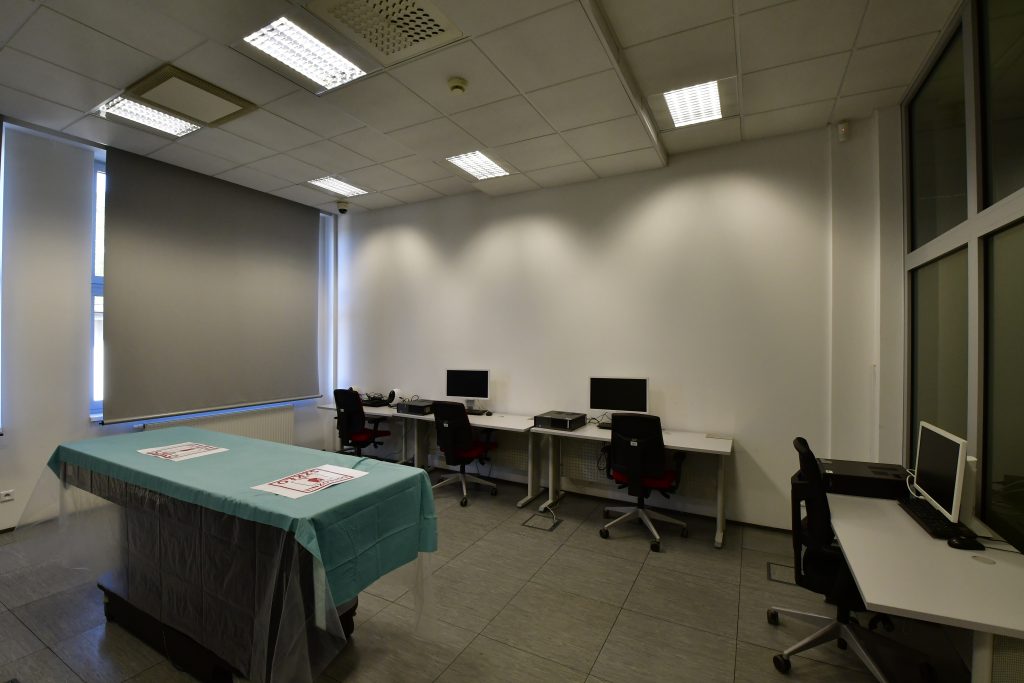The Education and Medical Simulation Centre in Katowice of the Medical University of Silesia in Katowice consists of two segments: educational and IT and simulation. On the ground floor there are rooms, including a hall, lecture halls, computer rooms, and practice rooms. On the first floor there are six high-fidelity simulation rooms, i.e.: an operating room, an intensive care room, two rooms of the hospital emergency department (four stations), a pediatric room and a delivery room. There is also an area adapted to the simulation of pre-hospital events with an ambulance simulator.

The main hall is a spacious place where, when organizing various events, you can prepare a catering stand or create space for a poster session. During various events, it is possible to display information on two large TVs. During the academic year, they display schedules of classes taking place in the Center. On the ground floor, you can also find vending machines with coffee, tea and snacks.
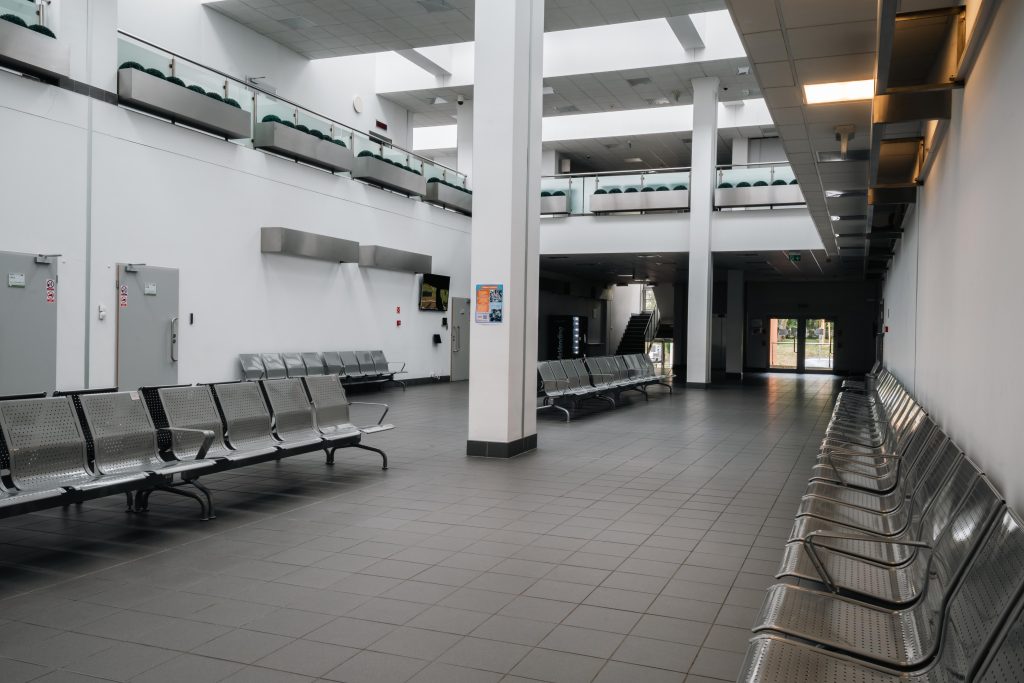
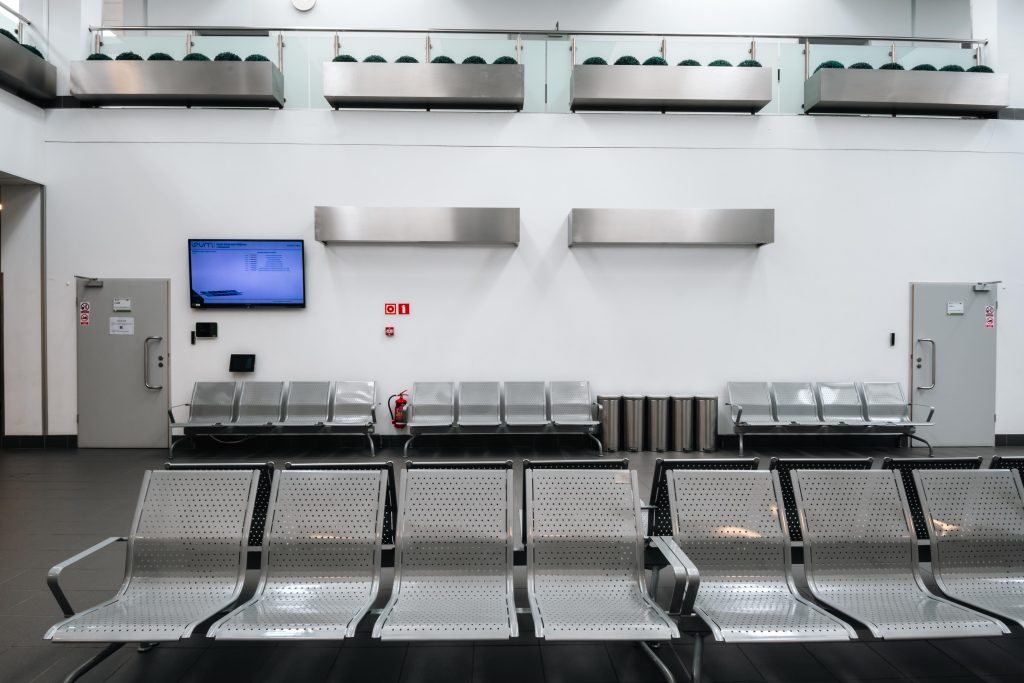
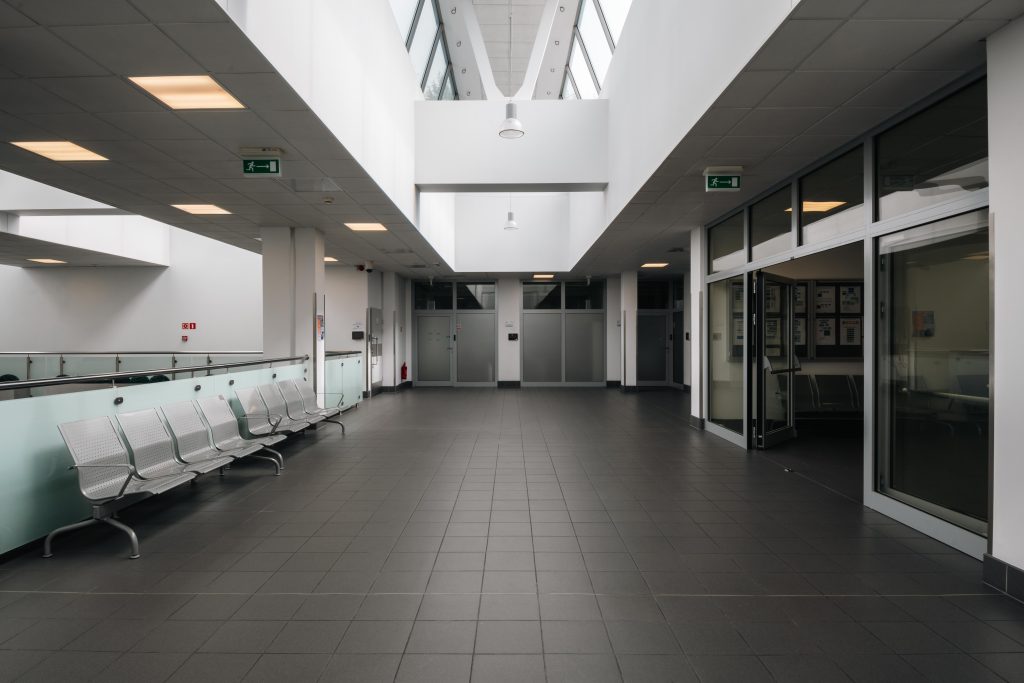
Rooms 106, 107 and 117 are equipped with computer stations for 24 participants, 1 computer for the lecturer, a projector and a dry erase board. Room 117 also has a large TV.
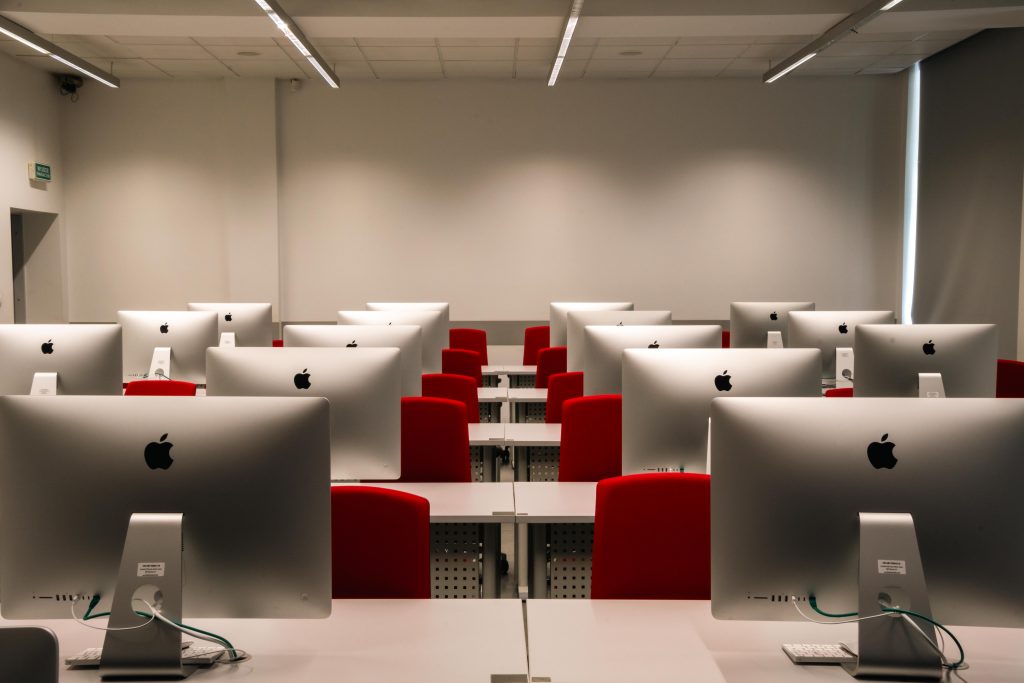
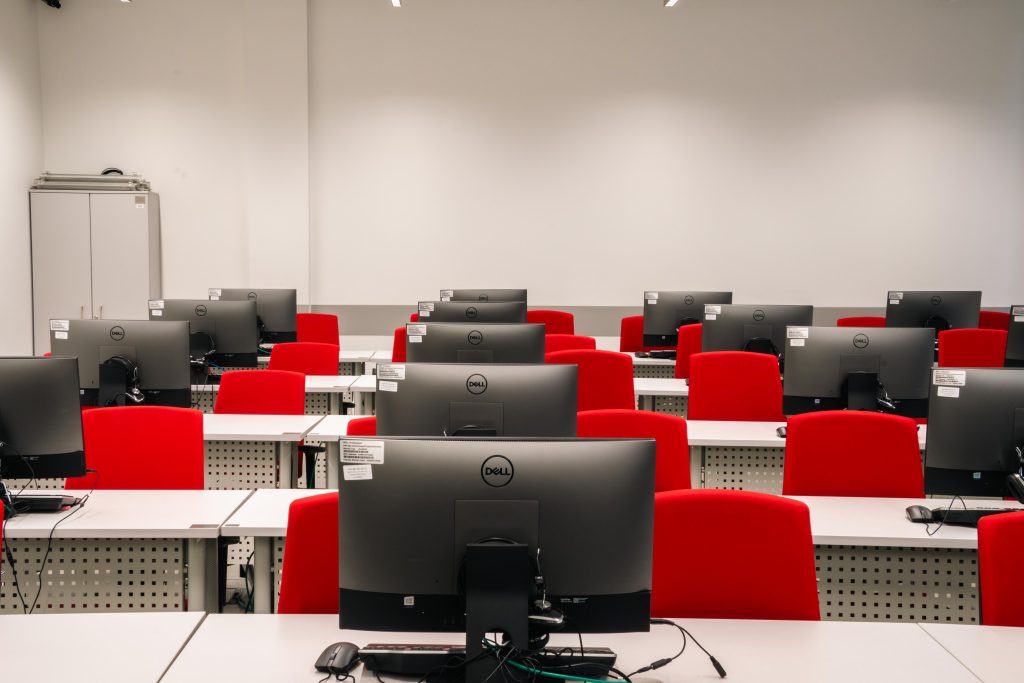

Rooms 108 and 111 are conference rooms equipped with a projector/TV and a computer for the lecturer. Room 112 is a small exercise room available to students so that they can prepare for classes on their own.
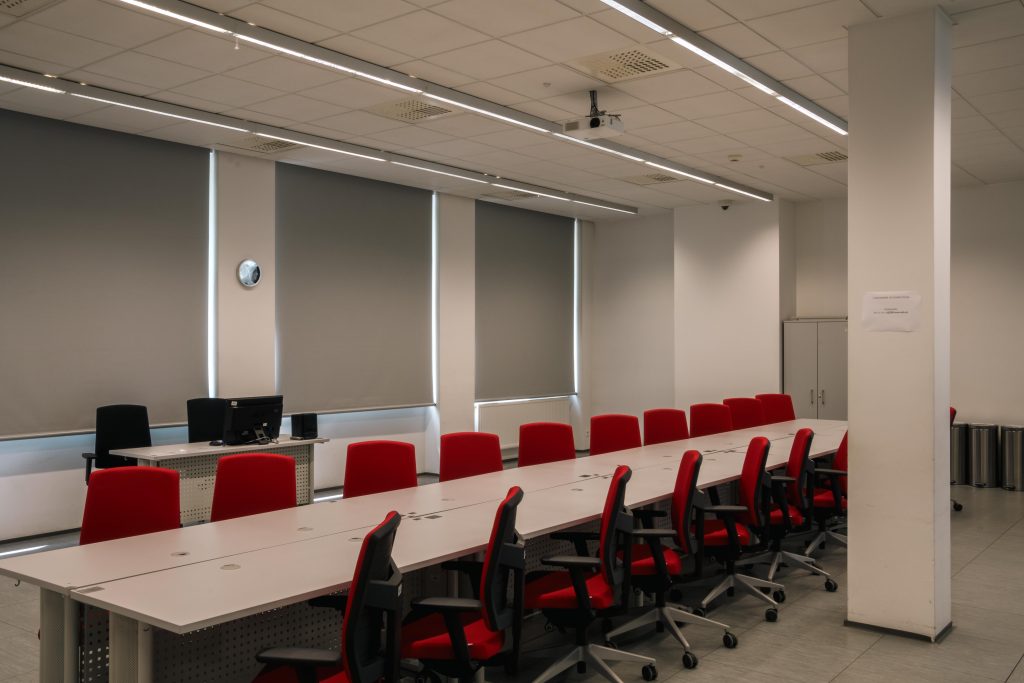
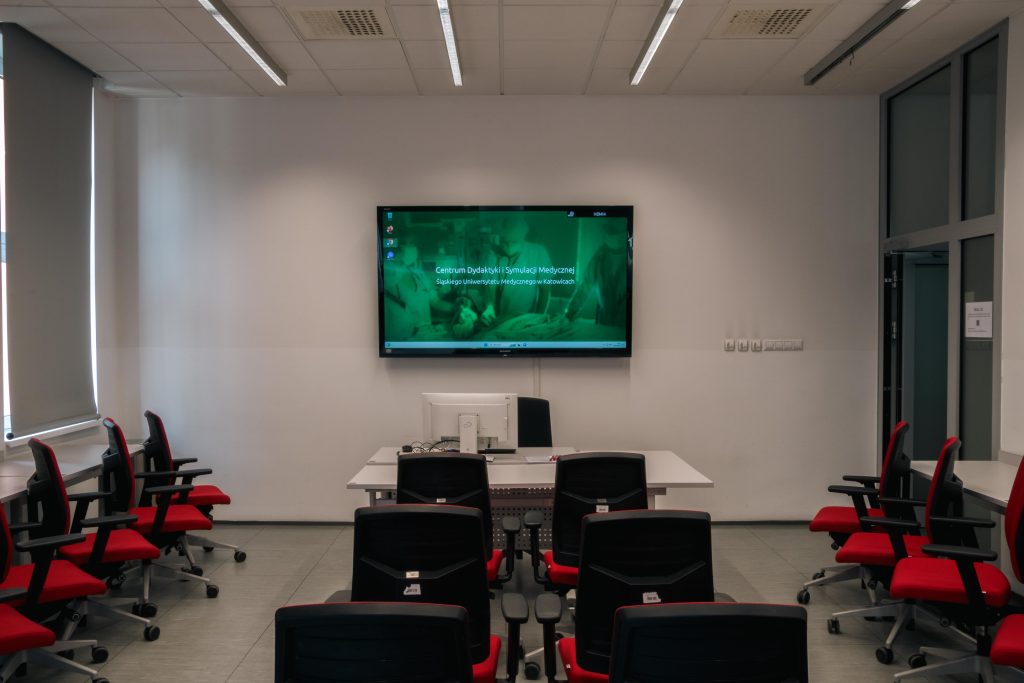
Halls 113 and 114 can accommodate 108 and 121 participants respectively. They are equipped with 3 projectors, a desktop computer with HDMI port for the lecturer. If necessary, the center can provide a set of wireless microphones.

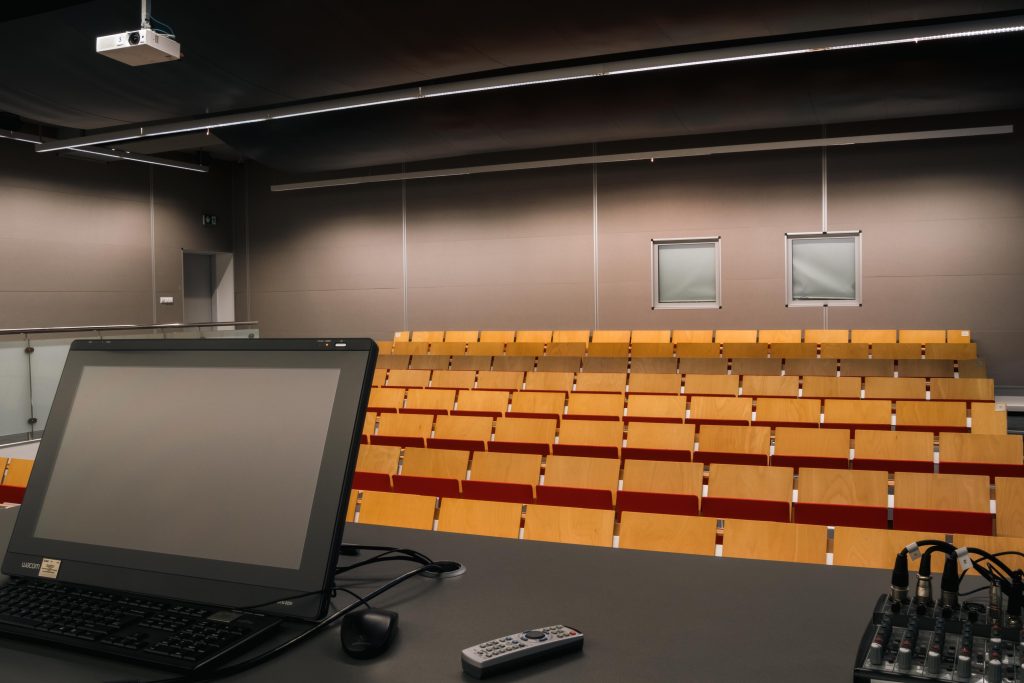

On the first floor of the Centre there are ten advanced, full-body patient simulators (seven adult simulators, a child simulator, an infant simulator and a labour simulator with a newborn simulator). The simulation rooms faithfully reflect real rooms, and the vast majority of the equipment in the rooms is real medical equipment (including an anaesthetic machine, respirators, defibrillators, cardiomonitors, laryngoscopes). In addition to medical equipment, the simulation rooms are equipped with an audiovisual system that allows the simulation session to be recorded in the form of a film, which can be used during debriefing. In order to discuss the simulation session, the person conducting the classes can go with the participants to one of three smaller rooms, the so-called “debriefing rooms”. These are smaller rooms equipped with a projector, computer and audio equipment, in which it is possible to conveniently summarize the course of the simulation session.
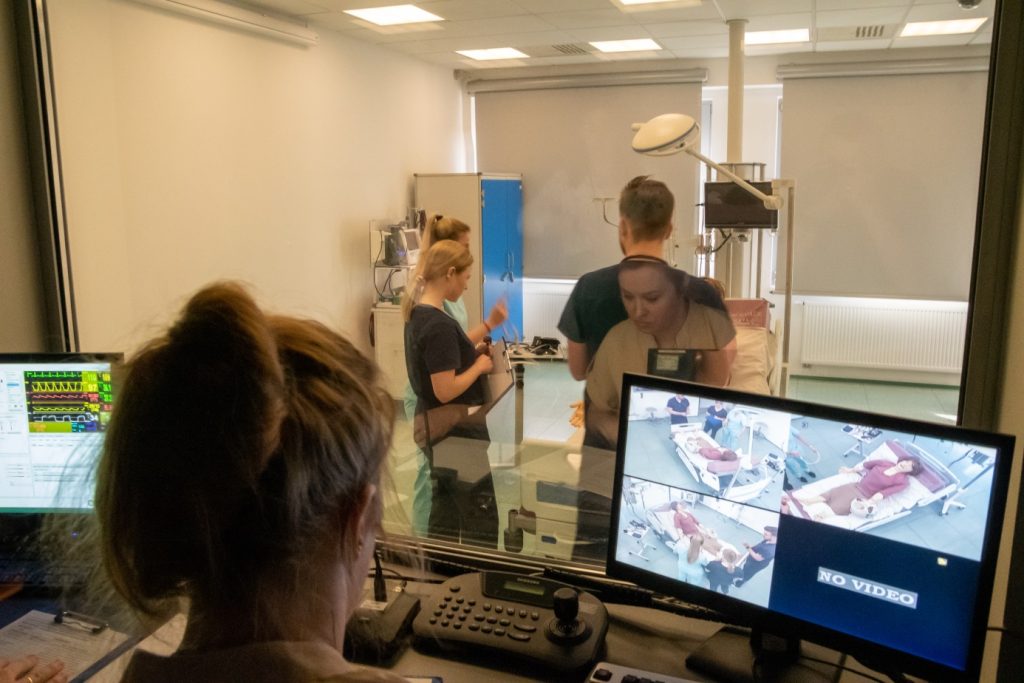

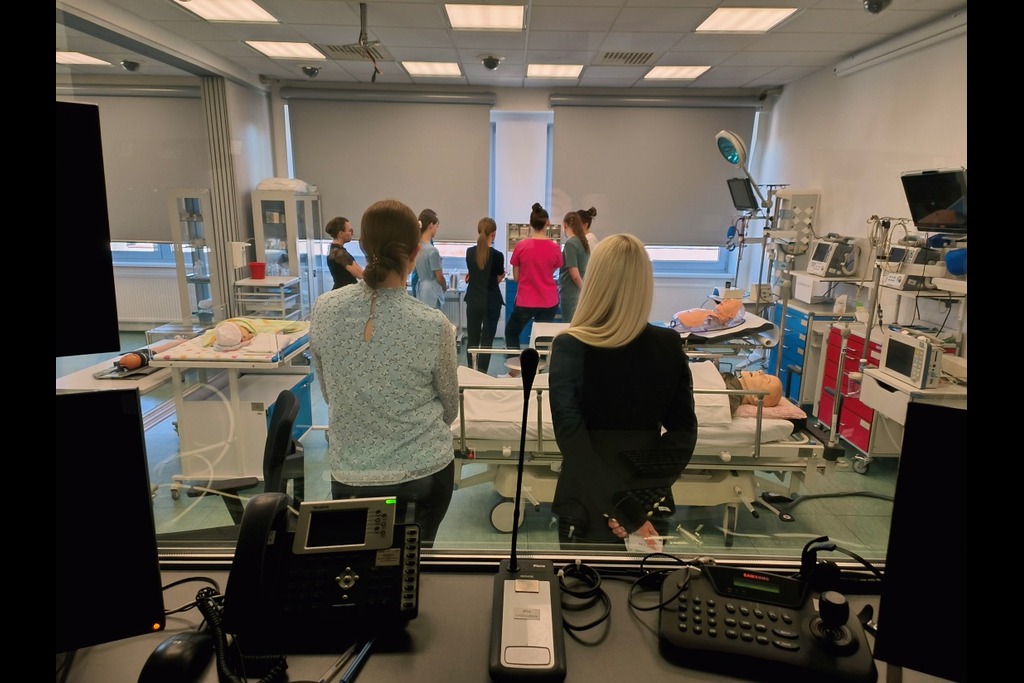
In addition to the rooms for advanced simulation sessions, the Center provides four training rooms, mainly for so-called low-fidelity simulations. These are primarily manual skills exercises, which use less advanced phantoms, training models or trainers, e.g.: mannequins for learning to conduct cardiopulmonary resuscitation, limb models for learning to insert needles, cushions for learning surgical suturing, models for decompression of pneumothorax, etc.
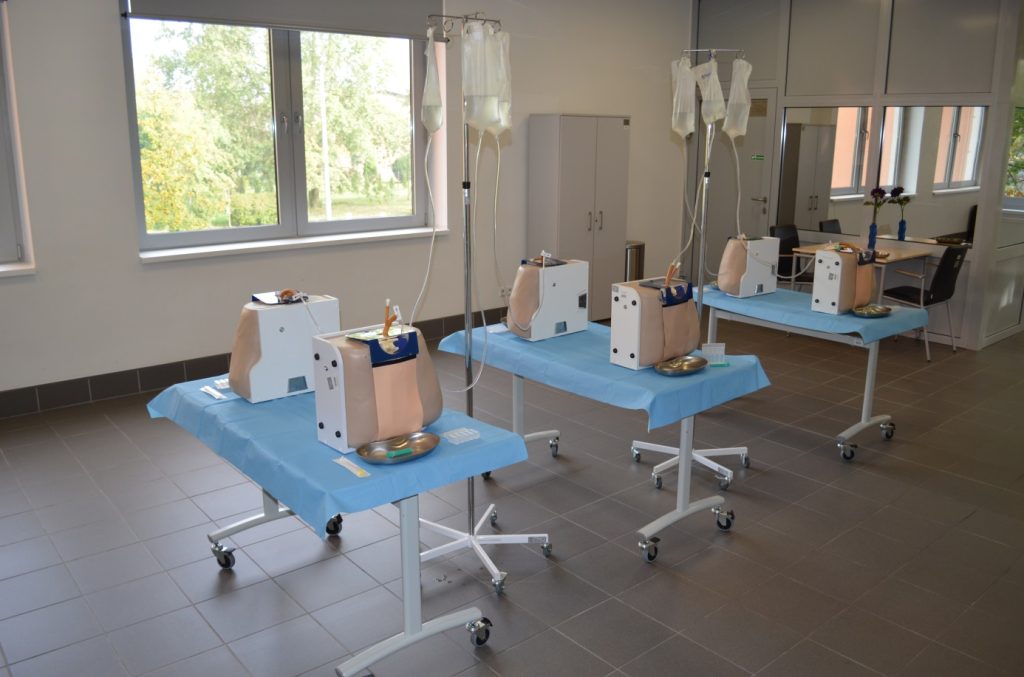

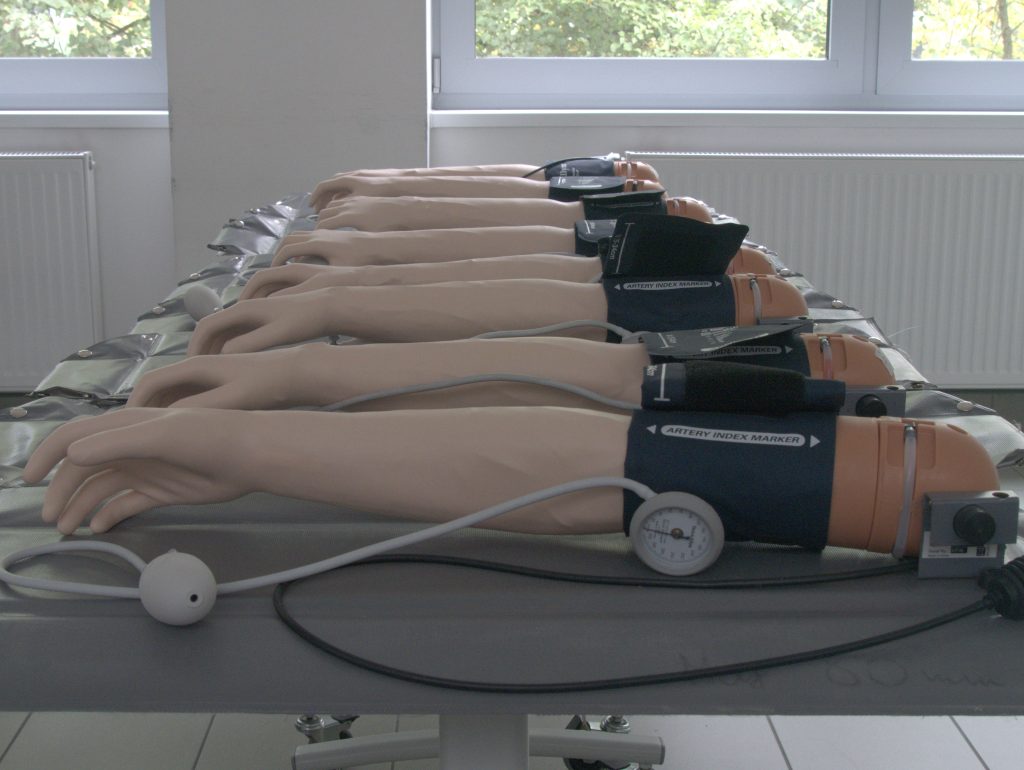
A small exercise room has been created for students’ use, where they can use a computer or prepare for classes in peace, this is the previously mentioned room 112. It is also possible to use any trainer to practice given skills. The condition for using such equipment is prior contact with the Center Manager and the Simulation Department in order to establish the necessary details.
Organization and support during classes for students are not the only activities of the Center for Medical Education and Simulation of the Medical University of Silesia in Katowice. Since the beginning of its existence, the SUM WARS simulation competition has been organized for students of selected fields of study every year. Students face various clinical scenarios, and the winning team takes part in nationwide competitions. The Center’s employees participate in events aimed at the broadly understood promotion of the University, popular science events (Silesian Science Festival, Summer School, etc.). At the request of the instructors, training in conducting classes using the simulation method is organized, and for several years during the summer, first aid courses have been organized for SUM employees. During the pandemic, the Center’s employees conducted courses on vaccinations against Covid-19. The Center is a place where several large projects are being implemented or have been implemented, including: POIiŚ (Operational Program Infrastructure and Environment), POWER (Educational Program Knowledge Education Development), How to talk to treat well. The Centre’s teaching rooms are also a place for meetings and associations between the University Authorities and guests from all over the world.





